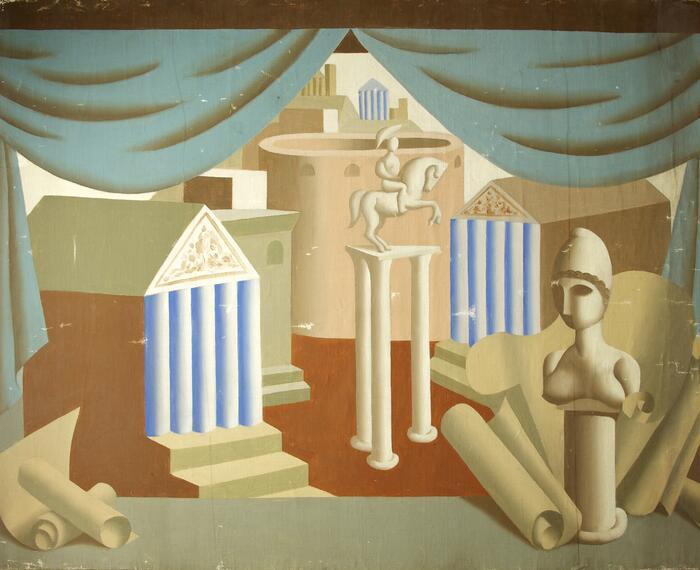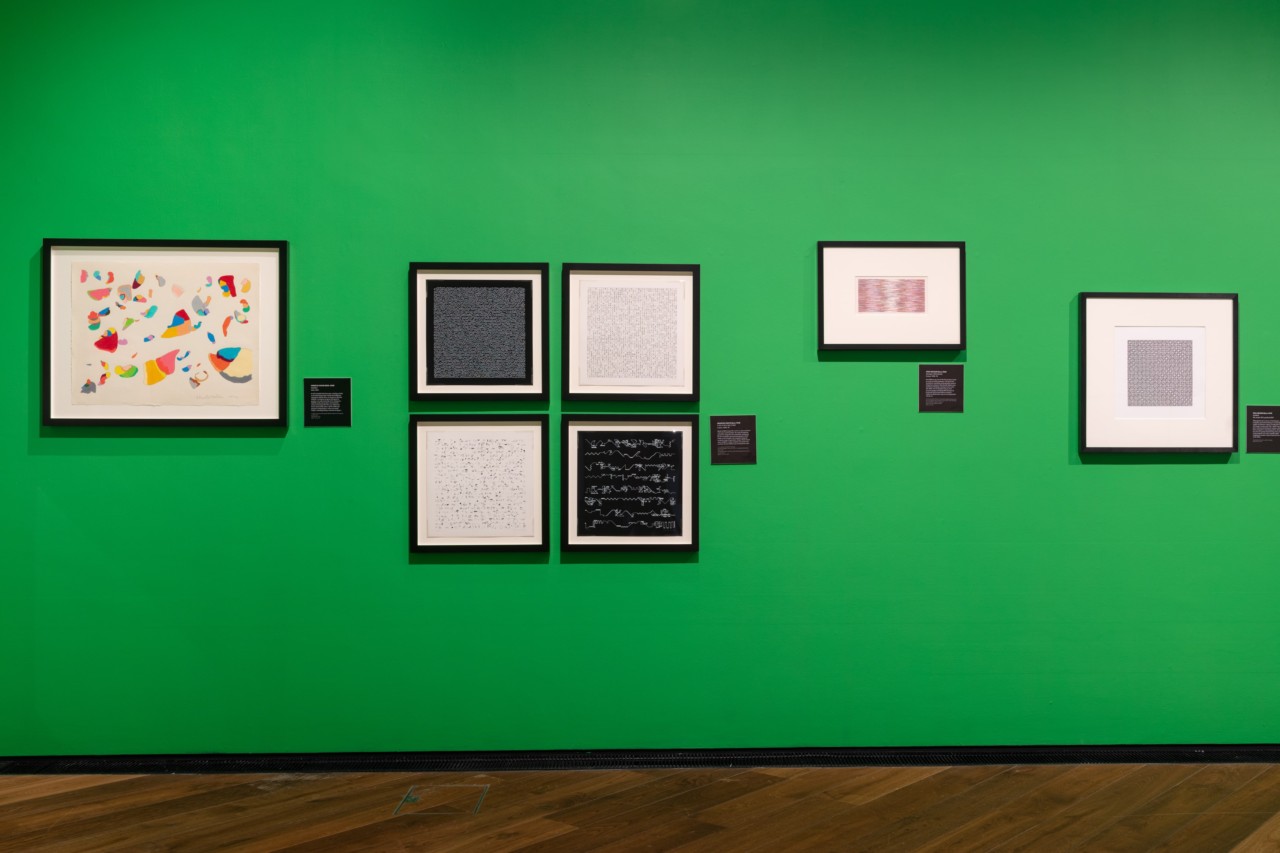


Installation view, Chance & Control: Art in the Age of Computers – Created by the V&A – touring the nation. Firstsite, 2019. Photograph by Anna Lukala
Cybernetic Serendipity, an exhibition held at the ICA in 1968, is one of the first exhibitions to explore the relationship between the computer and the arts. Curated by Jasia Reichardt, it presented examples of artworks using the computer as a tool for making art.
Many of the works that were included in the ICA exhibition were acquired by the Victoria & Albert Museum and are now part of a major touring exhibition, titled Chance and Control: Art in the Age of Computers, currently on view at Firstsite in Colchester.
The exhibition presents early examples of computer-generated art by pioneering digital artists such as Herbert Brun, (b. 1918), Georg Nees (b. 1926) and Frieder Nake (b. 1938), and offers viewers the opportunity to trace the chronological development of digital art.
Reichardt writes in the catalogue essay for the ICA exhibition that “people who would never have put pencil to paper, or brush to canvas, have started making images…which approximate and often look identical to what we call art and put in public galleries. This is the single most important revelation of this exhibition.” One might add that it raises questions about art in the age of mechanical reproduction, the aura of the artwork and the potential of every man to be called an artist.
This “democratisation” of the process of art is often the calculated result of algorithms. Georg Nees, a student of philosopher Mark Bense, attempted to establish a scientific model for creating and appreciating artistic products. He believed that through the statistical analysis of images, it was possible to codify the process of making art and this is how he came to produce his series of Art from Machines, 1972. By giving the computer a set of instructions, he was able to direct the pen across the drawing surface. However, as the computer had no screen, the artist could not fully control the resulting image, allowing for chance to creep in. Similarly, Nake’s Walk-Through Raster, 1972, is the result of the introduction of random variables into the process that could not fully predict the outcome. Roman Verostko (b. 1929) developed his own software to control a pen plotter. An algorithm would dictate the shapes and the distribution of colour an ink on paper in his Struggle, 1995 series. The resulting image is something akin to Chinese calligraphy.
It is worth noting that these early propagators of computer art have been looking into the conditions of production in an attempt to bring information aesthetics in dialogue with some of the conceptual concerns of modern art, especially abstraction. Nake’s Homage to Paul Klee, 1965 is an attempt to produce a computer-generated version of Paul Klee’s painting Highroad and Byroads, 1929. Similarly, there is a screen print by A. Michael Noll, inspired by Bridget Riley’s painting Current, 1964. Noll realised that a computer could create an approximation of Riley’s artwork and he came up with Ninety Parallel Sinusoids with Linearly Increasing Period, 1964. Creative translation is key here: the way one translates experience into code and then into imagery.
The emphasis on process, which many artists, especially painters, have been exploring for decades, is the conceptual premise for many of these experiments. Some of the works have the ability to share feeling and experiences in an abstract, yet no less emotional, manner. Vera Molnar’s Letters from my Mother, 1988 are created from two plotter drawings that simulate the handwriting of her elderly mother as she became increasingly unwell and her handwriting less stable.
Vera Molnar was one of the first women to create art using technology. Her Homage to Bela Bartok, 1978-79 is her way of celebrating the rhythmic freedom of the composer. Molnar co-founded several artist research groups including GRAV, whose members explored collaborative ways of creating non-representational images, reminiscent of op-art.
The exhibition at Firstsite is a wonderful opportunity to view some thought-provoking examples from early pioneers of computer art who decided to give part of the decision-making to an intelligence other than their own. Despite its conventional mode of display, Chance and Control succeeds in communicating the possibilities of technology in art. It conveys the openness and relevance of the digital in modern art and raises critical questions about the creative process.
Vassilios Doupas
Curator of Programmes
Firstsite, Lewis Gardens, High Street, Colchester, Essex, CO1 1JH. Open Monday-Sunday 09.00-21.00. Exhibition continues until 26 January 2020. www.firstsite.uk